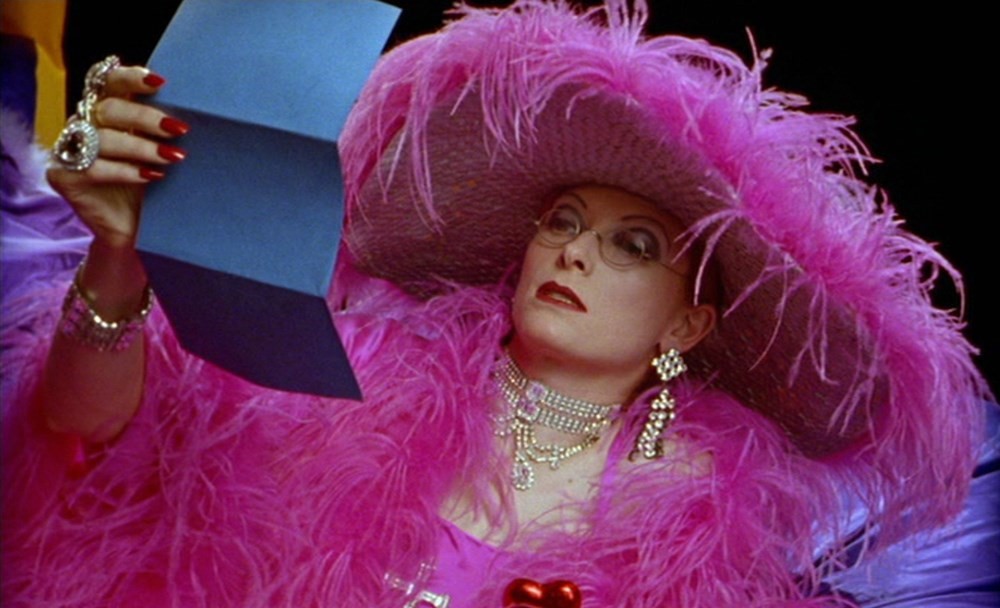The AnOther coverstar's depiction of Lady Ottoline Morrell in Derek Jarman’s 1993 film Wittgenstein offers maximalist style inspiration
“God the English are a queer bunch; Lady Ottoline Morrell was the queerest. She was fucking the gardener, and Russell.” This is the line that a young Ludwig Wittgenstein daintily uses to introduce Tilda Swinton’s depiction of the historical figure in Derek Jarman’s Wittgenstein (1993). Originally written by literary theorist Terry Eagleton, the script was reworked by the auteur of queer arthouse cinema to examine the politics and sexuality of the Austrian philosopher, including his period of study at Cambridge University under Bertrand Russell, with Swinton portraying the logician’s rather camp aristocratic mistress. The real Lady Ottoline was known for her many love affairs, which some consider to be the inspiration for D.H. Lawrence’s Lady Chatterley. And it must be said, Swinton’s fabulous character interpretation is enough to make us want get into bed with a doctor of philosophy and/or gardener as soon as possible, or at the very least start wearing a colossal feather trimmed hat on a regular basis.
The Signature Style
Sandy Powell, who went on to win Academy Awards for her outstanding work in cinema, created the costumes in the film. Under Jarman’s instruction, the characters in Wittgenstein all wear variations of the same look, and therefore Swinton was dressed in a set of identical outfits differentiated by their acrid shades of magenta, blue, mustard, green and red, heavily embellished with marabou feathers and the diamante costume jewellery dripping from every limb. The stark use of neon colour present throughout the entire film, not merely in the ensembles of Lady Ottoline, were employed because Jarman was on the verge of going blind, a result of AIDS-related complications. A particularly notable scene is one in which the actress appears with her face painted as May Ray’s 1922 photograph of Bronislava Nijinsky, in stripes of blue and yellow with a plastic comb strategically placed in her topknot. Morag Ross, the make-up artist responsible for such a look, also gave Swinton pillar-box red fingernails and lips, a pallid complexion and spidery thin brows framing heavily shadowed eyes, reminiscent of Marlene Dietrich.

The Modern Manifestation
There is clear inspiration drawn from Christian Lacroix in Powell’s designs worn by Lady Ottoline Morrell, as her outfits are in keeping with the theatrical haute couture for which the French fashion designer is so renowned. This influence was recently seen on the runways of A/W17 where Jacquemus paid homage to Lacroix through surreal, sculptural millinery, and in AnOther Magazine’s S/S17 special styled by Katie Shillingford and shot by Roe Ethridge. As Alexander Fury reiterates: “He had a fondness for the high-gloss of duchesse satin, clashing together various colours – like his signature shades of shocking pink, hellfire orange and a sickly gooseberry chartreuse – in a single outfit. In all likelihood, those jarring colours would then be paired with further hues, or juxtaposed against brocade or embroidery, perhaps swooshed over with an old-fashioned fichu or apron, the fabric knotted up into a bow, or a bustle, or a big fat cabbage rose. Christian Lacroix’s style was about excess and abundance. It was, simply, about more.” It’s a sentiment that can certainly be applied to Swinton’s character in Wittgenstein. Minimalist fashion this may not be, but for those looking to inject a little excitement into their wardrobes, why not look to Lady Ottoline for some maximalist elements to style with that navy blue COS dress?






